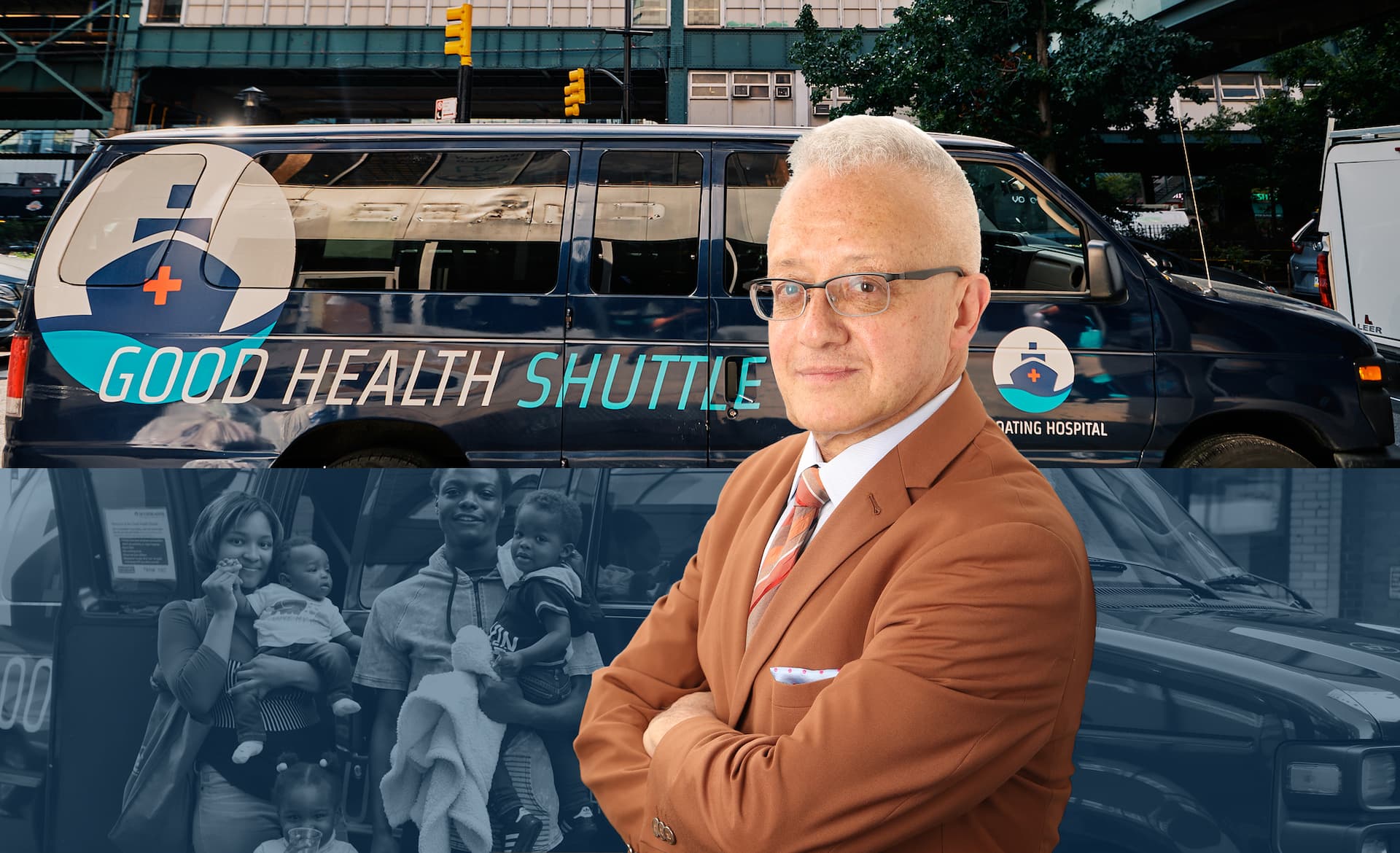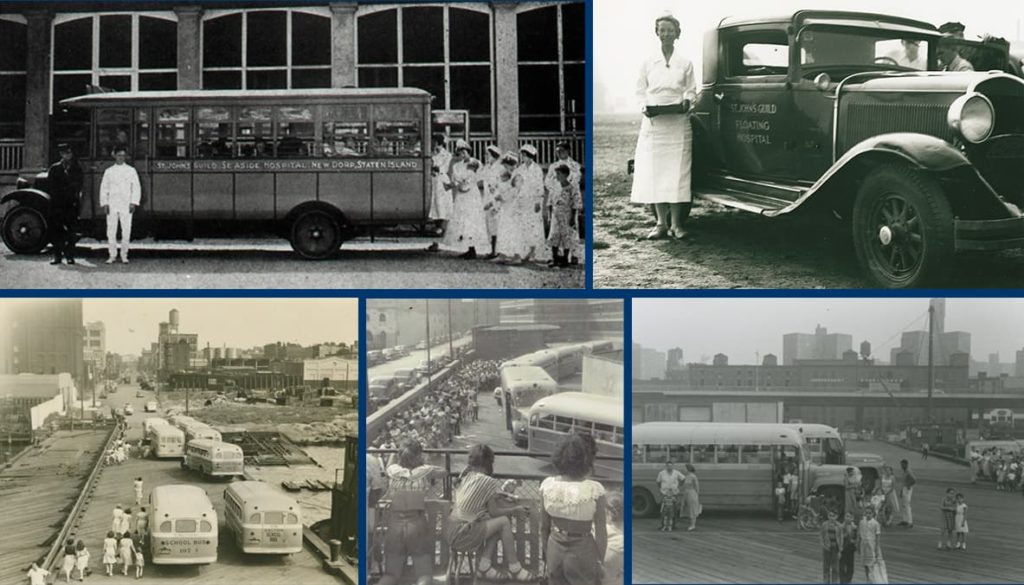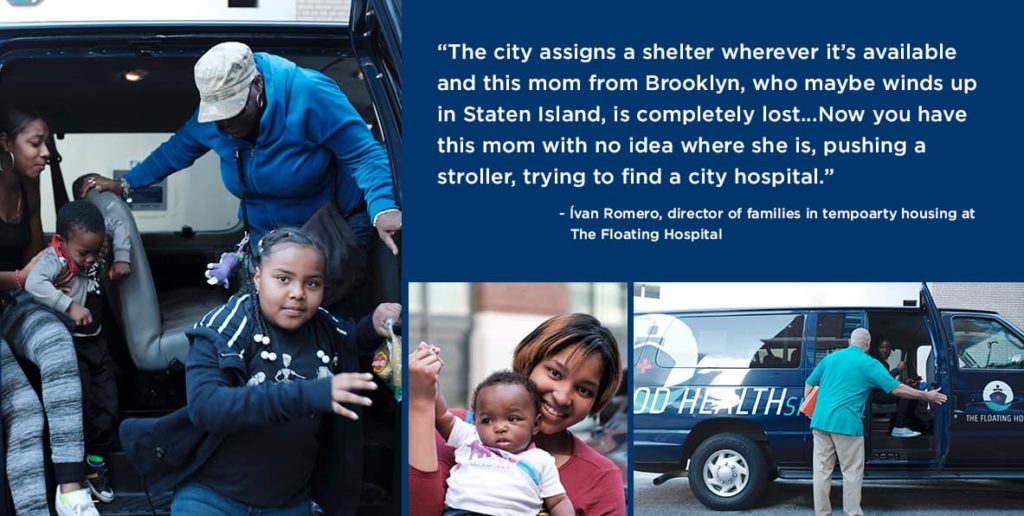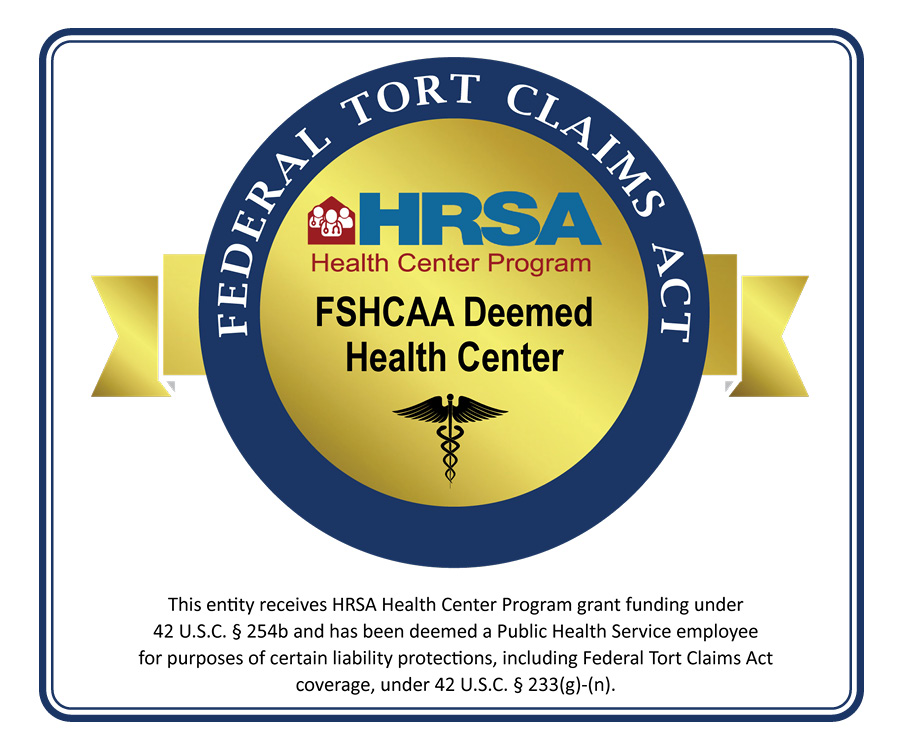
Wellness on Wheels: The Floating Hospital’s Good Health Shuttle Connects Human Beings and Healthcare
The Floating Hospital’s Good Health Shuttle Connects Human Beings and Healthcare
For people experiencing homelessness, the simple notion of transportation can stand between receiving healthcare and foregoing it altogether.
The Good Health Shuttle, The Floating Hospital’s fleet of minibuses, resolves that. Funded in part by government sources and mostly through donations, it has been the clinic’s unique differentiator, ensuring that patients experience no barriers in getting to the doctor.
“One thing we discovered back in the day and still, is the one big difficulty for families living in shelters is gaining access to quality healthcare,” says Ivan Romero, the clinic’s director of families in temporary housing. The free shelter-to-clinic shuttle is available for all patients in the 250-plus homeless shelters and domestic violence safe houses the Floating Hospital serves. Romero calls running the shuttle “one of his most important roles” and, he says “certainly, one of his most fulfilling roles” by linking families in homeless shelters with this vital service.

Access to healthcare has always been a priority for The Floating Hospital. Starting top left, clockwise: 1929 • Departing from The Seaside Hospital, The Floating Hospital’s land-based facility, The Seaside Hospital; circa 1930 • Stylish transport; 1951 • Our fleet of refurbished school buses, ready to transport passengers home; 1952 • Going home is never as much fun as arriving; 1960 • Patients ready to embark on a day at sea.
The Care of Connecting
The Good Health Shuttle launched in 1994 when the City of New York created the Department of Homeless Services. The Floating Hospital linked with that city agency to connect the tens of thousands of New Yorkers experiencing homelessness with a way to access the clinic’s services. In a city with such vast public transportation options, door-to-door shuttle service may sound like a pretty nice perk, but the reality of getting from here to there for these families is often far from simple or easy.
“The families become homeless because of evictions, or domestic violence, or they’re undocumented. They have to report themselves to the Department of Homeless Services, which assigns them to a shelter in one of the five boroughs, no matter where you lived before,” explains Romero. “A typical family we serve may be a young female with two or three children, no education, and a lot of challenges trying to find a job to pay market rent. It’s just impossible.”
“The city assigns a shelter wherever it’s available and this mom from Brooklyn, who maybe winds up in Staten Island, is completely lost. She has to take her children for physicals, for school or immunization, or maybe she needs to see a doctor at the local hospital. Now you have this mom with no idea where she is, pushing a stroller, trying to find a city hospital.”
For women and their children who are the victims of domestic violence and living in secure safe houses, there’s an extra level of care from Romero and the drivers transporting them. “These are confidential places and it is paramount to keep that aspect of security and privacy,” he says. “The only person who knows where they are is me and the directors of those facilities. Not even drivers know where they go.” Romero’s drivers arrange pick-up points close to the facilities and return patients them back to that point. “They trust us. We even have female drivers for those who not comfortable with a male driver.”

Families leaving the Good Health Shuttle vehicle after arriving at our clinic; mother and her baby wave “bye bye” to our photographer; driver checks that all is well before beginning patients’ journey back to their shelter. Note that these photos were taken pre-pandemic.
Rolling Through the Pandemic
The mini-buses run morning to early evening, Monday through Friday. But during the pandemic the hours and work became longer and more difficult to keep patients—and staff, who were also using the service to get to and from work—safe and connected. Not only were workers starting earlier and ending their days later and enforcing safe distance and mask wearing on the buses, but they also had the added responsibility of cleaning and disinfecting the vehicles after each passenger drop-off to ensure safety for the next pick-up. This was in addition to Romero’s training and insistence that everyone who gets on the Good Shuttle is treated with dignity, kindness, and respect.
“We want all the same things for these families going through such a hard time,” says Romero, who’s been with the Floating Hospital for 28 years, and credits his team for the exceptional service they deliver. “We keep in mind that these families are going through a very challenging time in their lives and we provide best care for them.”
Share This Story, Choose Your Platform!
Categories
Tags
The Floating Hospital provides high-quality healthcare to anyone who needs it regardless of race, ethnicity, religion, gender, immigration or insurance status, or the ability to pay. By providing unrestricted medical care in tandem with health education and social support to vulnerable New York City families, The Floating Hospital aims to ensure those most in need have the ability to thrive, not just survive.


